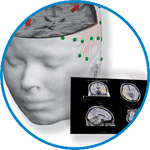- Home
- About ANT
-
Products

asa
asa is a highly flexible EEG/ERP and MEG analysis package with a variety of source reconstruction, signal analysis and MRI processing features.
.jpg)
eego mylab
The new frontier in multimodal brain research. With up to 16 kHz sampling rate, 256 EEG channels and unique software features, eego mylab gives you an unprecedented in-depth understanding of the human brain.

eego sports
eego sports offers complete freedom to collect high-density EEG data, bipolar EMG signals, and a variety of physiological sensor data, wherever and whenever required, with publish quality data in less than 15 minutes!

waveguard net
The waveguard net sets a new standard for research applications requiring high-density EEG data acquisition with quick preparation time, high flexibility, and subject comfort.

visor2
Our new and upgraded visor2 solutions integrate all the latest technologies for navigated rTMS, dual-coil navigation support, EEG-TMS recordings and pre-surgical evaluation for the highest quality in research and clinical procedures.

powerMAG ANT
The PowerMAG ANT 100 rTMS stimulator is designed for the specific needs of high-end TMS applications. Powerful high-frequency TMS as well as high precise single pulse and repetitive pulse protocols are combined in one single device.

xensor
xensor offers the solution for digitization of 3D electrode positions. xensor takes care of the whole procedure; it records, visualizes and stores positions acquired with a dedicated digitizer.

waveguard original
waveguard original is the cap solution for EEG measurements compatible with fMRI, MEG and TMS system. Use of active shielding guarantees performance in even the most demanding environments.

waveguard connect
waveguard connect EEG caps are a perfect match for hospitals and institutes aiming at reliable EEG, maximum uptime and great patient comfort! For optimal signal quality, the electrodes are made of pure, solid tin.

waveguard touch
waveguard touch is a dry electrode EEG cap. The unique Ag/AgCl coated soft polymer electrodes provide stable, research-grade EEG signals while maintaining subject comfort. The combination of these innovative dry electrodes and the industry-leading waveguard cap makes waveguard touch the best solution for dry EEG.

smartmove
smartmove allows planning of a complete TMS session ahead by defining stimulation sites based on anatomical MRI information and functional information like fMRI, PET or EEG/MEG.
Stay - References
- Support
- Events
- News
- Contact Us
You are here
A method for evaluation and comparison of parallel robots for safe human interaction, applied to robotic TMS
A method for evaluation and comparison of parallel robots for safe human interaction, applied to robotic TMS
Transcranial magnetic stimulation (TMS) is a noninvasive method to modify behaviour of neurons in the brain. TMS is applied by running large currents through a coil close to the scalp. For consistent results it is required to maintain the coil position within millimetres of the targeted location, but natural head sway and practitioner fatigue may hinder this. Serial robots are currently used to assist the application of TMS. However, their low stiffness limits the performance and their high moving mass limits the operating speeds for safety reasons. Since 6-DOF parallel robots combine high stiffness with low moving mass, they have potential for fast, safe and accurate positioning required for TMS during activities. For choosing the safest parallel manipulator, we developed an evaluation method using robotic safety criteria, including motor speed, motor acceleration, force transmission, and workspace accuracy. The method is applied for evaluation and comparison of the Delta robot with rotation head, the Hexaglide robot, and the Hexa robot. The Hexa robot shows to have the best safety characteristics. This paper also presents the design and evaluation of four controller strategies for the Hexa robot. These strategies include the application of a straightforward PID control (PID), a PID control with Jacobian Feed-Forward (PID J), a PID control with a Spring Force Control (PID O+) and a combination of these (PID J O+).

 Read more
Read more.jpg)




